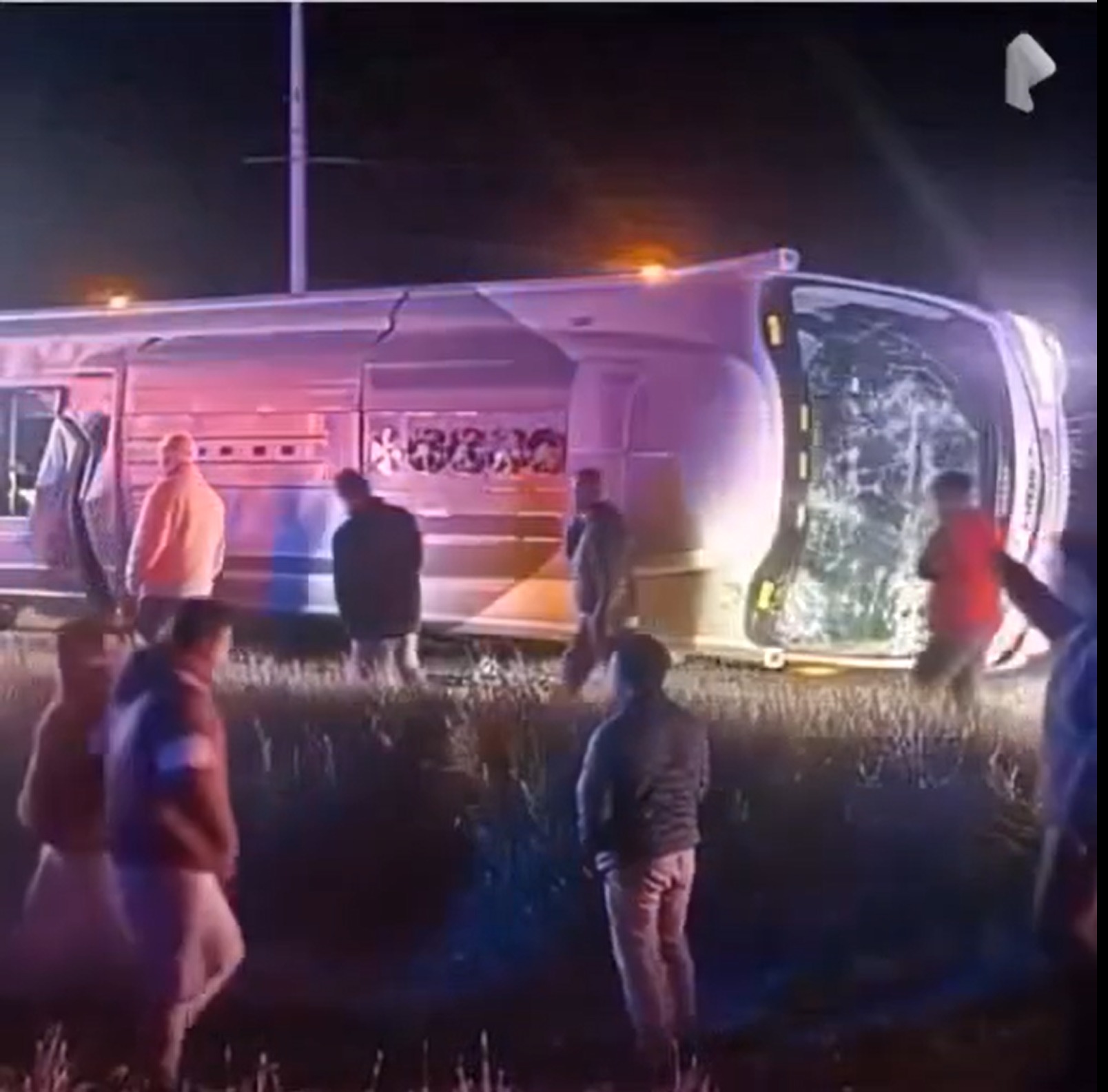A catastrophic traffic accident on the Mexico-Querétaro Highway in Huehuetoca has shaken the nation and left investigators racing for answers. What started as a routine morning commute quickly turned into a scene of horror, as a massive chain-reaction collision claimed 19 lives and left dozens more injured. Authorities are now faced with a pressing question: could this tragedy have been avoided?
The accident happened at kilometer 059+000, near Huehuetoca in the State of Mexico, along one of the country’s busiest transport routes. Early reports indicate the disaster began when a heavy trailer failed to brake in time. Witnesses described the sound as terrifying — tires screeching violently, followed by a thunderous crash that sent metal, glass, and debris flying across the highway. Within moments, multiple vehicles were caught in the chaos, crushed, overturned, and stacked in a mangled heap.
When emergency responders arrived, the scene resembled a war zone. The trailer had jackknifed across all three lanes, completely blocking northbound traffic. Drivers trapped inside their vehicles screamed for help as smoke and dust filled the air. Some survivors managed to escape, dazed and injured, while others could only watch in horror as flames began to consume nearby wreckage.
Rescue teams worked frantically to save lives. Firefighters cut through twisted metal doors with hydraulic tools while paramedics treated the injured at the roadside. Local hospitals were quickly overwhelmed as ambulances transported victims for hours. Despite their efforts, the death toll kept rising as bodies were recovered.
Officials later confirmed 19 fatalities, including men, women, and at least one child. Many others sustained serious injuries, ranging from broken bones to life-threatening trauma. Families were immediately confronted with grief and desperation, rushing to the scene clutching phones and photos, while others waited anxiously in hospital corridors, praying for news of their loved ones.
Investigators from multiple agencies began piecing together the chain of events. Their focus centered on the trailer at the heart of the collision. Initial evidence suggests a brake failure, though whether caused by mechanical malfunction, lack of maintenance, or human error is still under investigation.
The driver, who survived with injuries, is being questioned. Early statements indicate he attempted to slow the trailer but lost control when the brakes failed. He reportedly broadcast warnings over the radio moments before the impact, but by then, it was too late.
The crash underscores a recurring problem on Mexico’s highways: the weak enforcement of safety regulations. Overloaded or poorly maintained trucks are a common sight on the Mexico-Querétaro Highway, a major commercial corridor connecting Mexico City to industrial zones in the north. Long-haul drivers often endure grueling hours under intense pressure, sometimes prioritizing speed over safety.
Experts warn that such systemic issues create conditions for disaster. A single faulty brake, a missed inspection, or a fatigued driver can turn an ordinary commute into a mass casualty event. On a busy highway, the results are catastrophic.
State authorities have promised a thorough investigation. Forensic teams are examining the wreckage to determine whether the trailer’s brakes failed due to mechanical defects or negligence. They are also reviewing traffic footage and interviewing witnesses to reconstruct the timeline. Officials are considering multiple factors — including speed, load, and road conditions — as potential contributors.
Meanwhile, public outrage is mounting. Social media is flooded with videos of the aftermath: burning vehicles, crying survivors, and first responders battling to contain the devastation. Many Mexicans are demanding stricter regulations for commercial trucks and stronger enforcement of safety standards.
“The government always promises action after tragedies like this,” one eyewitness said. “But nothing changes. The roads are still filled with trucks that shouldn’t even be operating.”
Grieving families are demanding accountability — not just from the driver, but from the trucking company and the officials responsible for oversight. “This wasn’t an accident,” said a victim’s brother. “This was negligence. Someone allowed that truck on the road knowing it wasn’t safe.”
Authorities temporarily restricted traffic on the affected highway section while cleanup crews spent over 12 hours removing debris and burnt vehicles. The highway reopened partially the next day, but the physical and emotional scars remain.
Funerals are being organized in Huehuetoca and neighboring towns. In one poignant image circulating online, a child’s bicycle, recovered from one of the wrecked cars, lies bent and charred among the debris.
Road safety advocates emphasize that this tragedy should be a turning point. Hundreds of deaths on Mexican highways each year involve preventable accidents with heavy trucks. Many could be avoided through regular vehicle inspections, stricter enforcement of driver rest periods, and tighter control of weight and speed limits.
However, progress has been slow. Corruption, understaffed agencies, and weak penalties for violations continue to hinder meaningful reform. While transportation companies often pledge compliance, enforcement is inconsistent.
The Mexico-Querétaro Highway has long represented both opportunity and danger — a vital route for commerce, yet notorious for deadly collisions. The Huehuetoca crash is the latest and most sobering reminder of the consequences of neglect.
As investigators continue their work, families await answers that may never come fast enough. The official cause may take weeks to confirm, but one truth is clear: nineteen lives were lost not to fate, but to someone’s failure to act responsibly.
Until change comes, the nation’s highways remain what they were on that tragic morning — a perilous intersection of carelessness and inevitability, where a routine drive can turn fatal in seconds.
